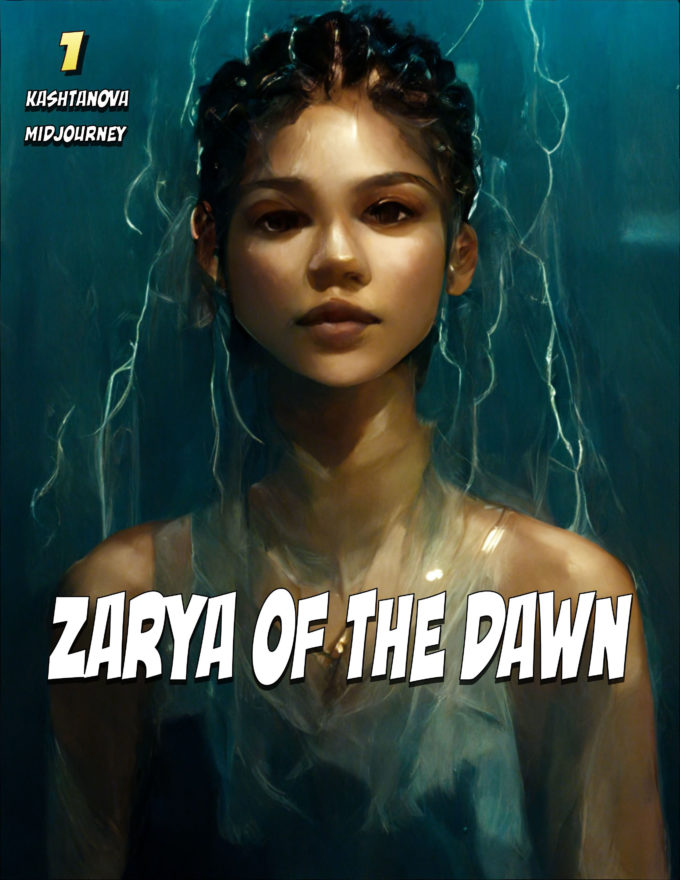The United States Copyright Office granted limited copyright protection to the graphic novel “Zarya of the Dawn” marking the latest development in the burgeoning field of AI-assisted creative works. Robert J. Kasunic, U.S. Copyright Off., Zarya of the Dawn (Registration # VAu001480196) (2023). While the Copyright Office approved protection for the text and arrangement of images, it denied protection for the individual images within the graphic novel. An attorney representing author Kris Kashtanova viewed the decision as a partial victory. However, the creator’s team plans to continue advocating for expanding copyright protection to creative works made with AI tools. “Zarya of the Dawn” represents one important step in the development of copyright standards applicable to a broad range of generative AI platforms.
Kris Kashtanova utilized MidJourney—a form of generative AI—to produce a series of images which she used in a graphic novel alongside her human-generated storyline. Initially, the Copyright Office granted protection to “Zarya of the Dawn” in its entirety. However, the government initiated a secondary review of the copyright upon learning that Mx. Kashtanova used MidJourney in the production of the comic book’s images. The central question of the government’s inquiry was whether Mx. Kashtanova’s interactions with MidJourney were sufficient to constitute an independent, creative work by Mx. Kashtanova.
This is not the first time that technology has disrupted the field of copyright protection. In 1884, the Supreme Court addressed the novel field of photography and determined that a photo represented an original, creative work of the photographer rather than a mere reproduction of nature. Today, U.S. courts and the Copyright Office apply what is known as the Feist test and look for an independent creation with a certain minimum amount of creativity before granting a copyright. Notably, however, the Copyright Office limits its grants to human creators only.
In its examination of “Zarya of the Dawn,” the Copyright Office identified too much “distance” between the user’s input and the output for copyright protection. Importantly, the government likened the use of MidJourney to hiring a visual artist whose work a patron could not claim as their own. This position stands in contrast to the view that generative AI resembles creative tools that produce output eligible for copyright protection. For example, photographs are generally eligible for protection, though a photographer used a camera.
By no means is the grant of partial copyright protection the end of the story for “Zarya of the Dawn” or disputes over generative AI more broadly. Mx. Kashtanova’s attorneys maintain that the decision of the Copyright Office focused too much on the output of the AI and too little on what they identify as the creative input of a human user. They now have the option of requesting reconsideration by the Copyright Office. If they receive two denials from the agency, the matter may progress to federal court. Reconsideration, as well as possible litigation, would likely be slow and resource intensive.
Several other parties have an interest in the outcome of “Zarya of the Dawn’s” copyright case, including MidJourney itself. MidJourney General Counsel Max Sills described the Copyright Office decision as “a great victory,” noting that it demonstrated a willingness to reward the efforts of those who utilize AI, such as MidJourney, in their creative process. Beyond MidJourney, the outcome of the “Zarya of the Dawn” application will impact other generative AI platforms, including ChatGPT and DALL-E whose users can expect similar treatment regarding their AI-assisted content generation.
If the use of MidJourney has, at the moment, failed to receive copyright protection, the question remains: How much control must a human user exercise over generative AI to receive a copyright for the output? It is likely that the number of generative AI platforms will increase in availability, each with its own unique features. As developers look to make products that meet the demands of content creators, the availability of copyright protection would offer a competitive advantage—if it is possible to meet the legal standard.
In addition to the protection afforded to generative AI content, these platforms face a myriad of legal challenges in the near future. First, challengers assert that the use of images to train generative AI without a license violates state and federal law. Second, the platforms entail a risk of infringing upon protected work. As a result, the platforms themselves could have secondary liability for any infringements. To further complicate matters, generative AI platforms face different legal and regulatory requirements in the United States, European Union, and around the world. In the coming months and years, the results of these challenges have the potential to reshape our world and how we interact with it.
